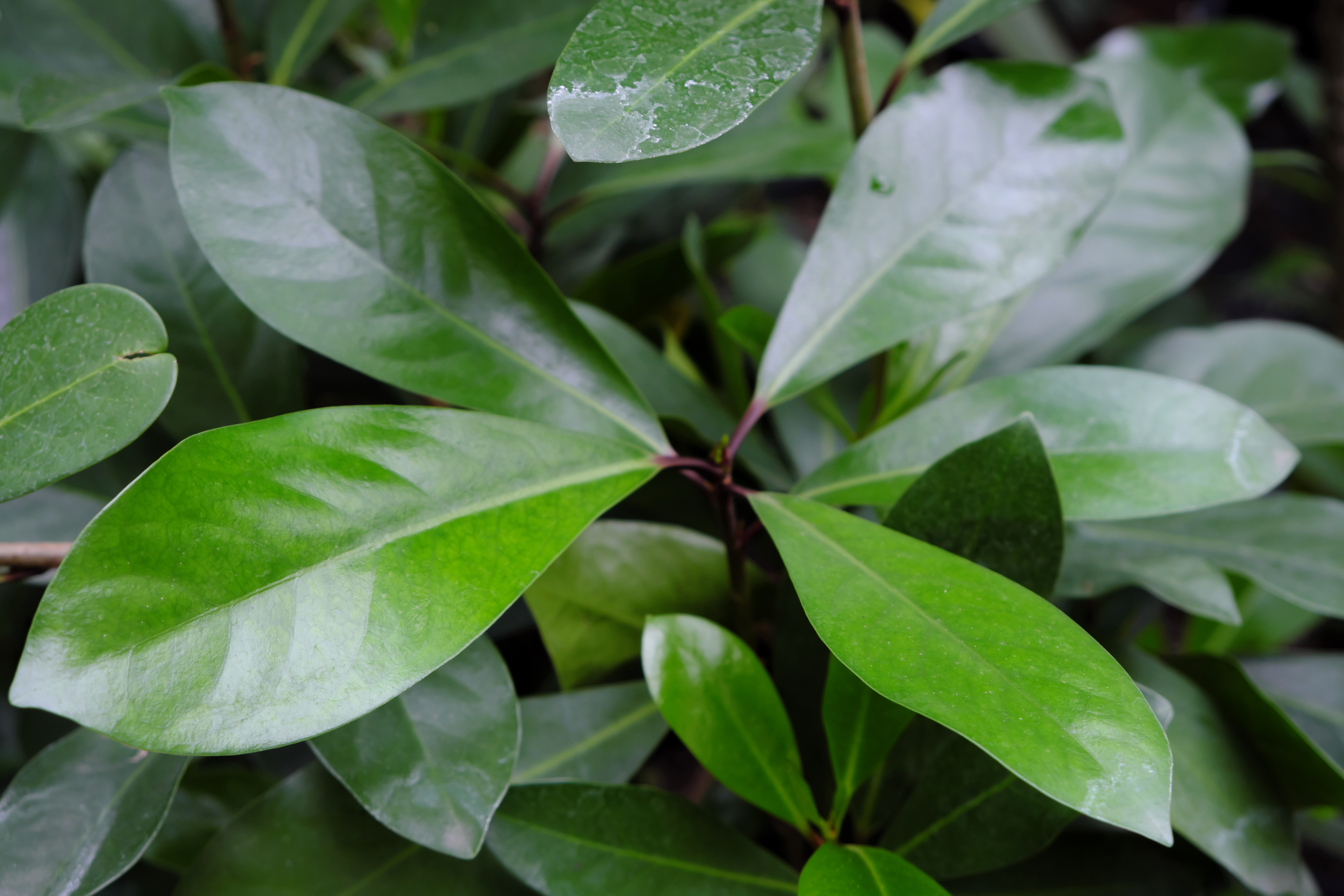New Zealand laurel
(Corynocarpus laevigatus)

Description
Karaka or New Zealand laurel (Corynocarpus laevigatus) is an evergreen tree of the family Corynocarpaceae endemic to New Zealand. It is common throughout the North and South Islands to Banks Peninsula (43°45′S) and Okarito (43°20′S), on the Three Kings Islands, on Raoul Island in the Kermadecs, and on the Chatham Islands. It is widespread in coastal habitats, often forming a major component of coastal forest, though it rarely dominates. Most botanists consider it to be native only to the northern half of the North Island, having been planted elsewhere by Māori near former village sites, and subsequently spread by birds. The common name karaka comes from the Māori language, and is also the Māori term for the colour orange, from the colour of the fruit. In the Chatham Islands, it is called kōpī, its name in the Moriori language. It is naturalised and considered invasive in Hawaii. Karaka is a leafy canopy tree with erect or spreading branches. It grows to heights up to 15 m and has a stout trunk up to 1 m in diameter. The thick, leathery leaves are glossy, dark green above and paler beneath, 50–200 mm long, and 30–70 mm wide with petioles 10–15 mm long. In winter and spring (August to November), karaka produces stout, erect panicles of tiny flowers. Individual flowers are 4–5 mm in diameter and greenish-cream to off-white or pale yellow. The fruit is an ellipsoid to ovoid drupe 25–46 mm long, with pale yellow to orange flesh, containing a single seed. The fruit ripens in summer and autumn (January to April) and the seeds are mostly dispersed by columbiform birds which eat the fruit. This evergreen tree is a popular place for smaller birds to sleep during the winter. It is of great value to birds and other fauna, including invertebrates that feed on the fruits and disperse the seeds. The ability to bear fruit in early summer (January) gives this plant an important ecological value, being a good food source for many species, especially birds, at a time when most other berries are not yet ripe. Centuries ago the seeds would have been dispersed by moa and possibly other large birds. Today only kereru are known to disperse karaka seeds, although there are reports of blackbirds pecking at fruits carrying them away from the tree if disturbed. Most of the seed crop lies beneath the tree where carpets of shade suppressed seedlings grow.
Taxonomic tree:







